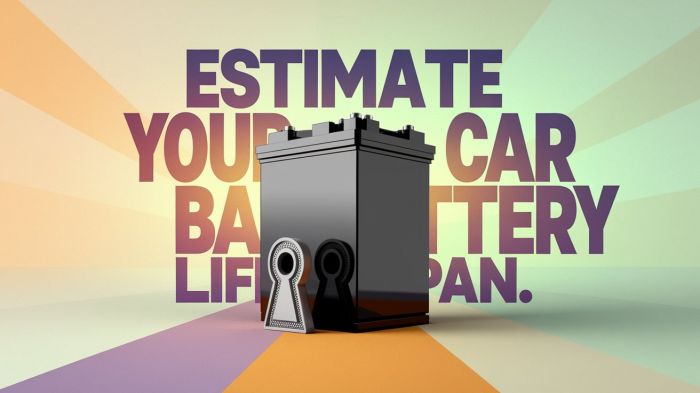The Power Speed triangle warning light is something that you normally see once you turn on the ignition just before cranking up the engine. In this instance, it is something harmless and is just something that routinely happens in your vehicle.
Triangle warning lights with arrow highlights
- Common reasons:any problem with traction control
- How to fix:read the codes, check the obvious possible issues
- Possible consequences:traction control may not work
- Priority level:High
- Can you drive?Carefully
- DIY repair:Impossible
- Repair price range:$150-$450

Most Common Causes of the Power Speed Triangle Warning Light in Vehicles
The Power Speed triangle warning light in a vehicle can sometimes be tricky to diagnose because it can stem from electrical and mechanical problems. These can be usually traced back to the following factors though based on reports, mechanics, and owners familiar with the issue:
1. Traction/Skid Control Malfunction
The Traction/Skid Control is a valuable feature in a vehicle that helps maximize traction and minimize the chances of a skid. This is achieved by utilizing sensors in the vehicle's suspension system which detect any slippage in the road surface, allowing for automatic braking and correction to be applied when needed.
When Traction/Skid Control malfunctions, it can cause the Power Speed Triangle warning light to activate as a result of its inability to properly monitor the vehicle's movements.
The most common causes of this issue include software-related issues as well as damaged or faulty wiring, faulty sensors, low brake fluid levels, or other issues with brake system components such as calipers, drums, rotors, or cylinders.
In order to assess the source of the problem one should look for symptoms such as excessive vibration during acceleration or braking, unusual tire wear, or poor handling. Manual checks such as checking the brake fluid levels, inspecting the tires and suspension system, and performing a visual inspection of the sensors and wiring, can also be done to determine if there are any issues present.
Additionally, diagnostic tools such as a scan tool or code reader can be used to pinpoint the exact cause of the malfunction.
If Traction/Skid Control malfunctions due to software-related issues a firmware update may be all that is needed to correct it. However, if any of the other mentioned components such as the wiring and sensors are found to be damaged or faulty they will need to be replaced in order to bring back the proper function of the tech.
It should be noted that in most vehicles, the tech simply utilizes the speed sensors on the wheels to monitor traction or skid, so that's where the replacements usually happen.
Depending on which components require replacement, these could include parts such as rotors, drums, calipers, cylinders, brake pads, sensors, or wiring. Regardless of the specific part needing to be replaced, it is important to make sure that only certified parts and technicians are used in order for the Traction/Skid Control system to function properly.
Any malfunction within the Traction/Skid Control system should be addressed as soon as possible in order to avoid further damage and ensure a safe and secure driving experience.
Only qualified technicians should work on this system and all replacement parts must be certified in order for the proper functioning of the vehicle's Traction/Skid Control. Following these steps can help provide peace of mind while ensuring a fully functional and properly running system.
2. ABS Malfunction
The Traction/Skid Control and the Anti-Lock Braking System (ABS) are interrelated features that ensure the proper operation of the wheels and tires. While Traction/Skid Control helps regulate the speed of the car over slippery surfaces, ABS prevents the wheels from locking up under hard braking.
Similarly, ABS malfunction can trigger the Power Speed Triangle warning light in your vehicle to come out in certain instances. This is because this problem can cause the brakes to lock up, leading to a decrease in braking power and an increase in stopping distance. As a result, the Power Speed Triangle warning light is activated as a precautionary measure, and at times, it is coupled with performance-limiting measures to prevent potential accidents.
ABS malfunction can be caused by various issues, such as software glitches, worn-out brake pads or rotors, low brake fluid levels, an ABS sensor malfunction, or blocked brake lines. In order to assess the source of the problem and determine if it is related to ABS malfunction, you should look for symptoms such as a pulsing sensation while braking and vibrations coming from the brake pedal.
Additionally, manual inspection checks of all relevant components such as the brakes, rotors, and lines should also be done. The use of diagnostic tools may also help in pinpointing any underlying problems with your vehicle's ABS system.
To address the issue at hand, the affected parts must be replaced. This may include new brake pads, rotors, and/or ABS sensors. Additionally, it is important to check the brake fluid level in the vehicle as well as clear any debris or blockages from the brake lines if present. In some cases where the issue is traced to a software glitch, a simple reset or reflashing in the electronic control unit (ECU) of the vehicle may be necessary depending on the nature of the problem.
Once these steps have been taken and all issues have been resolved, the Power Speed Triangle warning light should be disabled automatically.
3. Corroded Driveshaft Ring
The driveshaft is responsible for transferring rotational power from the engine to the transmission, and one of its crucial components is the driveshaft ring. Corrosion on the drive shaft ring will cause it to lose its ability to transfer energy efficiently, resulting in a decrease in output from the engine. This decrease in output can trigger an error code, or warning light known as Power Speed Triangle.
The most common causes of this problem are loose components inside the driveshaft assembly or corrosion on the surface of the driveshaft ring itself. To assess if corrosion is causing this issue, look for signs like rust spots, worn-out parts, or any visible damage that may be present due to corrosion.
Additionally, manual checks should be done by inspecting all connections and mounting points attached to the driveshaft, checking for any signs of rust or wear. If manual checks still prove inconclusive, you may need to use a digital multi meter to check the electrical connections and determine if corrosion is present on the driveshaft ring.
If it is determined that corrosion has caused the Power Speed Triangle warning light to activate, then it is necessary to replace all affected parts with new ones. The corroded part must be replaced as soon as possible because failing to do so can lead to more serious problems like engine failure or transmission damage.
Moreover, all other components in the drive shaft assembly should be checked for signs of corrosion and wear as well, and replaced if necessary.
It's important to note that replacing corroded parts should be done by a qualified mechanic, and any parts used must meet the manufacturer's specifications in order to ensure that they are safe to use.
Finally, it is also important to prevent corrosion from occurring in the future by regularly checking components and using protective coatings or rust inhibitors. By taking these steps one can ensure that their vehicle will remain reliable and safe for many years to come.
4. Tire Sensor and Tire Pressure Issues
Lastly, the Power Speed Triangle warning light can be a sign saying that something is wrong with the tires on your vehicle. Tire pressure and tire sensor issues are the most common elements to blame here, so assessing these symptoms is the first step in diagnosing the problem correctly.
To start, you should check for any signs of physical damage to your tires, such as punctures or tears. Additionally, thoroughly inspect each tire for low-pressure levels. If any sensors are damaged or not functioning correctly, they will not detect air pressure changes. Finally, use an appropriate tool to manually measure the exact amount of pressure in each tire.
If it turns out that one or more of your tires has too little air pressure, then you may need to inflate it to the levels specified by your car or tire manufacturer. If any tire sensors are found to be defective, then you will need to replace them with a compatible part.
To ensure that the Power Speed Triangle warning light does not reappear, be sure to check your tires regularly and maintain proper tire pressure levels. Additionally, inspect each tire for potential damage or wear and tear before and after every journey. By taking these steps, you should be able to diagnose and fix the issue quickly so that your vehicle can operate safely.
Conclusion
As shown here, the common culprits for the Power Speed triangle warning light can be anywhere from electrical to mechanical parts failure. Therefore, a systematic diagnosis of the problem in the hands of a professional mechanic or auto technician must be conducted at all times to arrive at the best possible solution.
About the authors
The CarAraC research team is composed of seasoned auto mechanics and automotive industry professionals, including individuals with advanced degrees and certifications in their field. Our team members boast prestigious credentials, reflecting their extensive knowledge and skills. These qualifications include: IMI: Institute of the Motor Industry, ASE-Certified Master Automobile Technicians; Coventry University, Graduate of MA in Automotive Journalism; Politecnico di Torino, Italy, MS Automotive Engineering; Ss. Cyril and Methodius University in Skopje, Mechanical University in Skopje; TOC Automotive College; DHA Suffa University, Department of Mechanical Engineering






Add comment